
San Felipe de Neri Church is a historic Catholic church located on the north side of Old Town Plaza in Albuquerque, New Mexico. Built in 1793, it is one of the oldest surviving buildings in the city and the only building in Old Town proven to date to the Spanish colonial period. The church is listed on the New Mexico State Register of Cultural Properties and the National Register of Historic Places and has remained in continuous use for over 200 years.
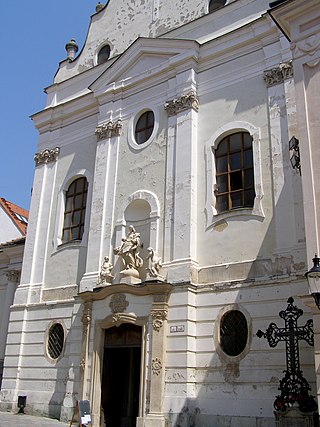
The Franciscan Church is the oldest existing religious (sacral) building in the Old Town of Bratislava, the capital of Slovakia. The church was consecrated in the year 1297 in the presence of King Andrew III of Hungary. In the past, the church building served for larger gatherings of townspeople or Hungarian nobles. In 1526 Ferdinand I, Holy Roman Emperor was elected here to become the King of Hungary. During coronations, kings used to knight nobles as Knights of the Order of the Golden Spur in this church.
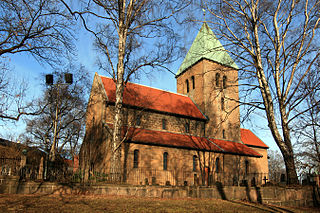
Old Aker Church is a medieval era church located in Oslo, Norway. An active parish, the church is the oldest existing building in Oslo. The church is surrounded by Old Aker Cemetery.

St Thomas the Martyr Church is a Church of England parish church of the Anglo-Catholic tradition, in Oxford, England, near Oxford railway station in Osney. It is located between Becket Street to the west and Hollybush Row to the east, with St Thomas Street opposite.

Andlau is a commune in the Bas-Rhin department in Alsace, Grand Est region of northeastern France.
Svendborg Friary was a Franciscan friary in Svendborg, on the island of Funen, in the present Region of Southern Denmark, and was one of the earliest Franciscan foundations in Denmark. Like almost all Danish religious houses it was dissolved during the Protestant Reformation of the 16th century.
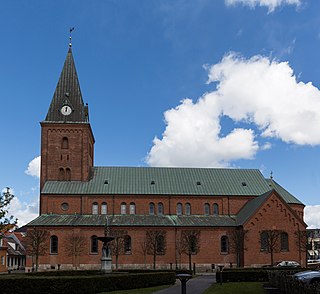
The Abbey of Our Lady, Aalborg was an early Benedictine monastery in Aalborg, Denmark. The former monastic church survived a parish church until 1876 when it was demolished. The present Vor Frue Kirke was built on the site between 1877 and 1878.

The Old Town of Oslo is a neighbourhood in the inner city of Oslo, Norway, belonging to the borough of Gamle Oslo and is the oldest urban area within the current capital. This part of the capital of Norway was simply called Oslo until 1925 while the city as a whole was called Kristiania. Oslo's old town was established with the urban structure around the year 1000 and was the capital of Norway's dominion in 1314. The main Old Town area has several ruins of stone and brick lying above ground, and large amounts of protected culture underground. The core area also has listed 1700s buildings. Towards Ekeberg slope and further up are some 17th and 18th-century wooden houses that are zoned for conservation under the Planning and Building Act, though there exist in the Old Town many four-storey brick houses, built at the end of the 1800s, and some heritage railway buildings from different eras.
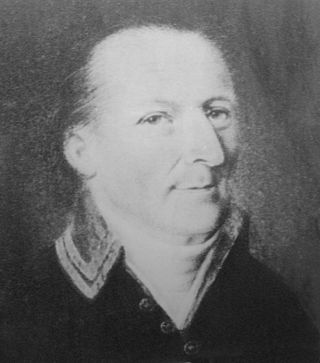
Olof Samuel Tempelman was a Swedish architect and, from 1779, professor at the Royal Swedish Academy of Arts. He was appointed royal architect in 1799.

Svaneke Church is located in the small town of Svaneke on the Danish island of Bornholm. It stands above the harbour at a height of 18 metres on the site of a small chapel which appears to have existed for quite some time before the town received its charter in the 16th century. The church was expanded over the years, the tower and spire being completed in 1789. In 1881, virtually the whole building was rebuilt by architect Mathias Bidstrup of Rønne, leaving only the tower and a small section of the south wall.

Stubbekøbing Church is located in Stubbekøbing some 18 km (11 mi) northeast of Nørre Alslev on the Danish island of Falster. The basilical nave was built of limestone in the Late Romanesque period. Choir and tower are of brick, the choir built in Early Gothic style, tower and the northern chapels in the 15th century in Late Gothic style. In addition to its Renaissance altarpiece and pulpit, it has a variety of old frescos and wall decorations (1300–1500).

The Abbey Church, also known as Nykøbing Church, in Nykøbing on the Danish island of Falster is a church in the Gothic style from the 15th century. Its origins go back to 1419 when Eric of Pomerania, king of the Nordic Kalmar Union, established a Franciscan monastery. One of its treasures is the Mecklenburg Ancestral Table (1627) presenting the ancestors of the dowager Queen Sophie.
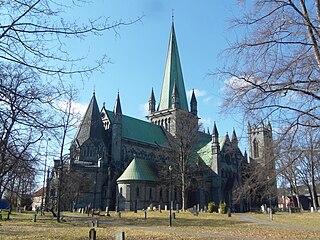
Church building in Norway began when Christianity was established there around the year 1000. The first buildings may have been post churches erected in the 10th or 11th century, but the evidence is inconclusive. For instance under Urnes Stave Church and Lom Stave Church there are traces of older post churches. Post churches were later replaced by the more durable stave churches. About 1,300 churches were built during the 12th and 13th centuries in what was Norway's first building boom. A total of about 3,000 churches have been built in Norway, although nearly half of them have perished. From 1620 systematic records and accounts were kept although sources prior to 1620 are fragmented. Evidence about early and medieval churches is partly archaeological. The "long church" is the most common type of church in Norway. There are about 1620 buildings recognized as churches affiliated with the Church of Norway. In addition, there are a number of gospel halls belonging to the lay movement affiliated with the Church of Norway as well as churches belonging to other Christian bodies. Until the 20th century, most churches were built from wood. 220 buildings are protected by law, and an additional 765 are listed as valuable cultural heritage.

Saint Leonard Catholic Church is a Roman Catholic church in the city of Madison, in the state of Nebraska in the Midwestern United States. Built in 1913, it has been described as "an outstanding example of the Romanesque Revival style of architecture."

Heidal Church is a parish church of the Church of Norway in Sel Municipality in Innlandet county, Norway. It is located in the village of Bjølstad, in Heidal, a side valley of the main Gudbrandsdalen valley. It is the church for the Heidal parish which is part of the Nord-Gudbrandsdal prosti (deanery) in the Diocese of Hamar. The brown, wooden church was built in a cruciform design in 1941 using plans drawn up by the architect Bredo Berntsen. The church seats about 292 people.

The St. Catherine of Alexandria Church is a Roman Catholic church in the Tabán quarter of Budapest, Hungary. It is the parish church of the Tabán Parish which also comprises parts of Gellért Hill and Naphegy. The church is a listed monument that was built in Central European Baroque style between 1728 and 1777. It was reconstructed several times in the 19th–20th centuries.

The Parish Church of St Mary with St Edward and St Luke, Leyton, also known as Leyton Parish Church and formerly, St Mary the Virgin, Leyton, is a Church of England parish church in Leyton, East London. Although records of the church go back to about 1200, it has been repeatedly rebuilt; the oldest surviving fabric dates to 1658, but a majority of it is from the early 19th century. It is a Grade II* listed building.

The Church of St. John the Baptist in Legnica is a Baroque church in Legnica, Poland, built in the first half of the 18th century.
A pulpit altar or pulpit-altar is an altar in a church that is built together with a pulpit that is designed as an extension above the altar, so the pulpit, altar, and altarpiece form one unit. This type of altar is typical in a Baroque style church whereas earlier medieval churches and many more modern churches tend to have the more common free-standing pulpit that was set apart from the altar. This design became popular after the Protestant Reformation in Lutheran churches. It was first built to emphasize the importance of the sermon and the preaching of the Word of God in the worship service. It also symbolizes that the Word of God stands together with the sacraments which takes place on the altar below. The first pulpit altars appeared in the German areas of Europe and in the baroque churches of the 1600s and 1700s. Sometimes the organ was placed above the pulpit as well to symbolize that music was also central to the church.

Hurum Church is a medieval stone church in Hurum, Norway. It was constructed in the 12th century. The church was damaged by fire in 1686, and rebuilt with a baroque interior. Next to the church, the Huitfeldt-family built a wooden funeral chapel in the second half of the 17th century. A new stone chapel was built in 1750, and contains the remains of the naval commander Iver Huitfeldt.






















